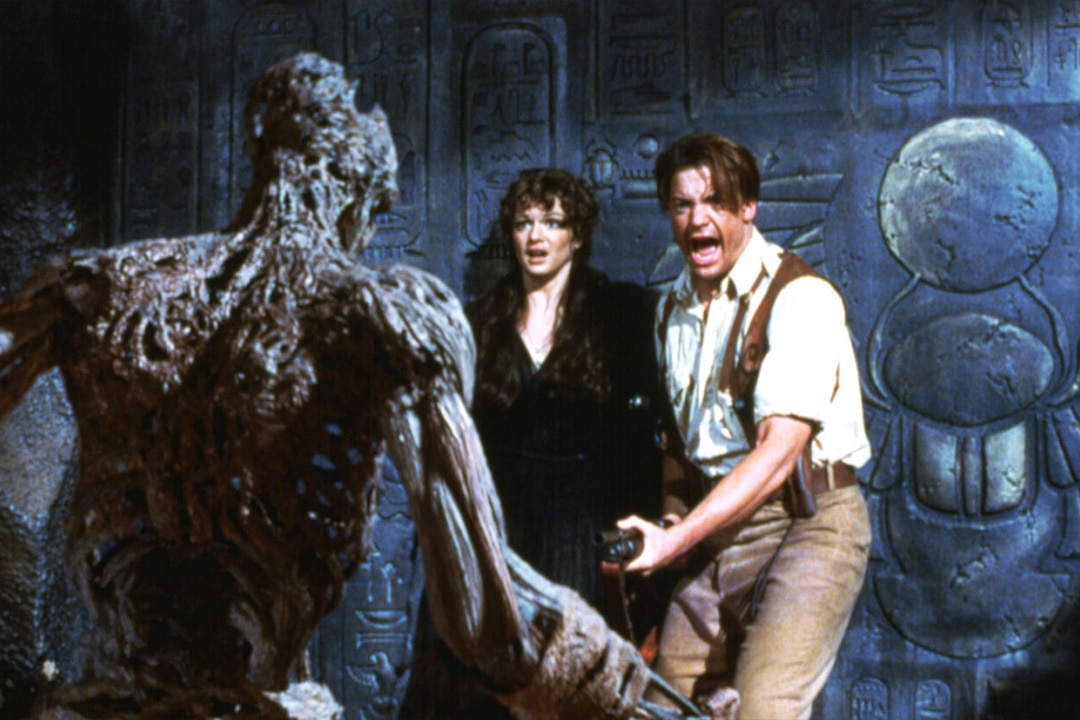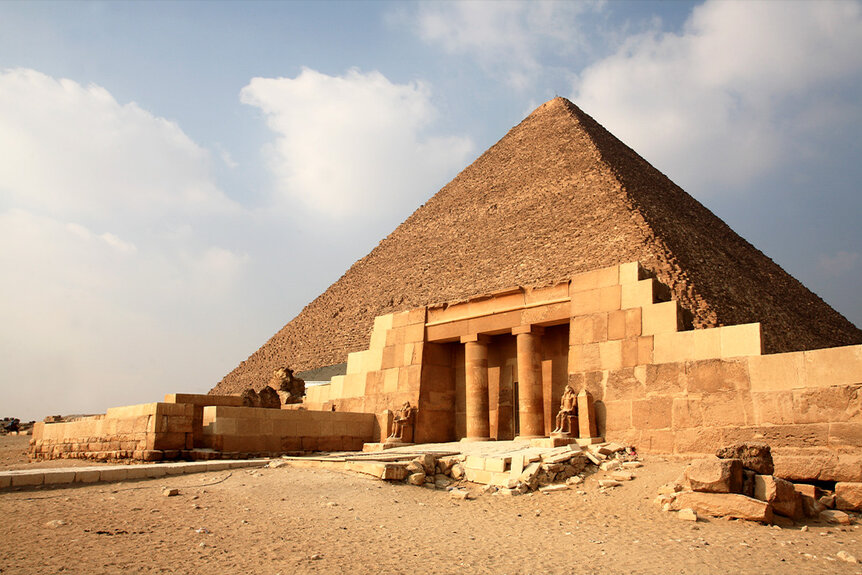Create a free profile to get unlimited access to exclusive videos, sweepstakes, and more!
Scientists peer inside the Great Pyramid using cosmic rays
On second thought, maybe mixing ancient artifacts and cosmic radiation is a bad idea...

Everyone’s favorite late ‘90s adventure flick, The Mummy, follows Rick O’Connel (Brendan Fraser) and Evelyn Carnahan (Rachel Weisz) on an ad hoc Egyptian expedition. They are in search of the solid gold Book of Amun-Ra, but they instead stumble upon the bizarrely mummified remains of a man called Imhotep. Meanwhile, a competing team of archaeologists do uncover a book, but it isn’t the one they wanted. Instead of the gold Book of Amun-Ra, they find its dark sibling, the jet black Book of the Dead which, when read aloud, resurrects the titular Imhotep to enact his revenge.
It's probably no mistake that curses and legends sprung up around the ancient Egyptians. They were constructed in large part for the purpose of protecting precious things. Treasures and booby traps, while not necessarily realistic, were to be expected. The Mummy takes place in the 1920s, toward the end of a period of more or less unchecked exploration in Egypt. Archaeologists and treasure hunters were digging anywhere and everywhere, breaking down doors sealed for centuries to see what was inside. It was the sort of world in which you could imagine that there might be a living mummy or an ancient curse just around the next corner.
Today, things are a little bit different. The pyramids are rightly regarded as the world wonders that they are, and you can’t just crack them open because you’re curious about the prize you might find at the bottom of the cereal box. Today’s archaeologists and explorers lean more heavily on a look-don’t-touch approach. The goal, of course, is to learn about the cultures which came before us while also ensuring important relics are preserved for the future.
RELATED: Brendan Fraser says doing another 'Mummy' movie would be 'fun' if 'right conceit'
What scientists really needed was a way to see inside of the pyramids and other ancient structures without touching them at all. Fortunately, it turned out the universe had built most of that instrument for them. Recently, two independent teams of researchers were able to peer inside the Great Pyramid at Giza using cosmic rays from deep space. Their results were published in the journal Nature Communications.
Out there in the vastness of the cosmos, black holes, supernovae, and other high-energy processes are lobbing particles across space toward our planet. At the end of their trip they smash into the atmosphere at incredible velocities and instantly transform into cosmic ray muons. They exist for only a few thousandths of a second before decaying into an electron and a couple of neutrinos, but that’s long enough for them to reach the surface and hit detectors placed there by scientists.
Muons have another characteristic which makes them useful for archaeologists and other scientists; they only interact with other matter very weakly, almost like a ghost trying to pick up a pen but only succeeding at nudging it. They can get through a pyramid or other stone structure without too much trouble, but they will get slowed down and some of them will get stopped before they make it through to the detectors on the other side. All of that means that if you put an object, like the Great Pyramid, between the sky and a muon detector, you can learn something about its insides from the amount of muons that make it through.
Comparing the number of muons you detect against the background rate that hits a detector when not obstructed can tell you about the density of an object, and if you’re clever, it can tell you about an object’s internal structure. That’s because if there are voids inside, like rooms or hallways, then the muons aren’t slowed down in those places and more of them get through. Things get really interesting if you set up a whole bunch of detectors in a bunch of different positions, so you can get readings at varying angles, and that’s exactly what scientists did.
“Matter naturally absorbs a fraction of these muons coming from the atmosphere, this fraction is determined by the thickness and by density of the probed object. The measurement of the muon flux in a given direction then provides a direct estimate of the mean density in that direction. From such measurements, 2D density maps can be obtained revealing the inner structure of an object,” researchers said.
RELATED: After his star turn in 'The Mummy,' Brendan Fraser came very close to playing Superman
In short, muons traveling through the pyramid provide a two-dimensional slice of the pyramid’s insides. Adding slides together eventually provides a more complete three-dimensional map without ever having to touch a single stone. When researchers collected the data and constructed their map, they confirmed the presence of previously discovered chambers and tunnels, but they also revealed the presence of a corridor previously unknown to science.
As to whether there is anything hidden in the newly discovered void, nefarious or otherwise, remains unclear and it’s possible it will stay that way. There is an appropriate and ongoing debate about balancing the benefit of discovery against potential damage to the pyramids and artifacts inside. It might be that the best decision is to leave them sealed, reinforcing the benefit and necessity of noninvasive tools like these.
They’ll probably help us to avoid any curses which might be hiding for us too.
Revisit The Mummy and its complete extended universe, available from Universal Entertainment.



























